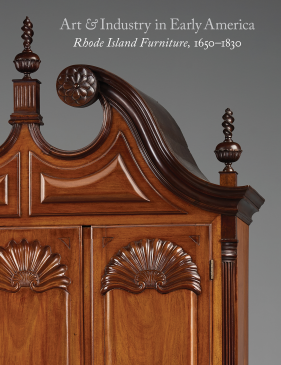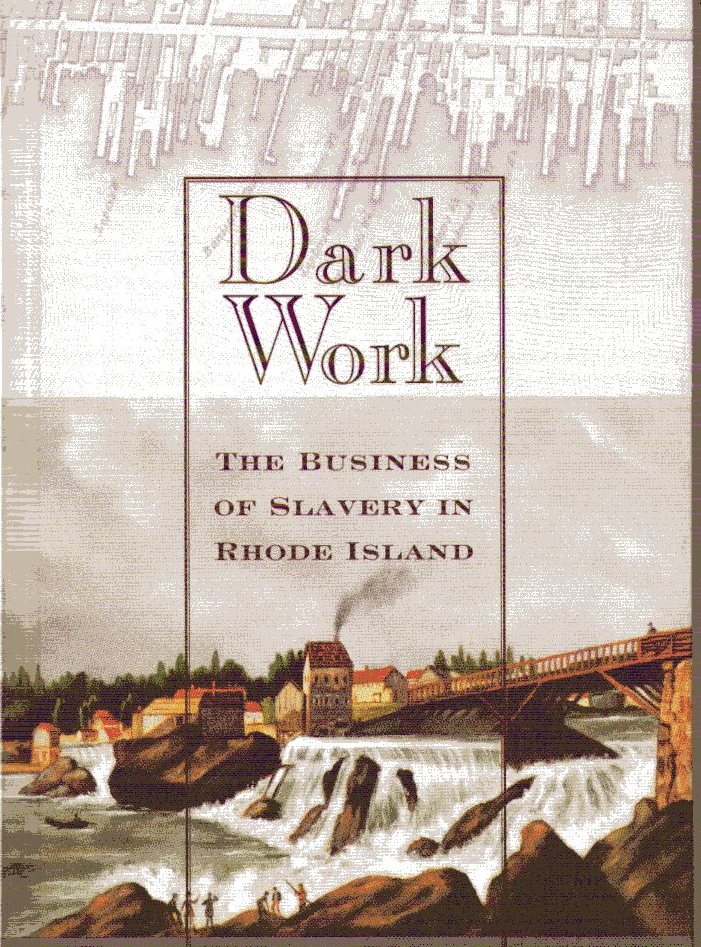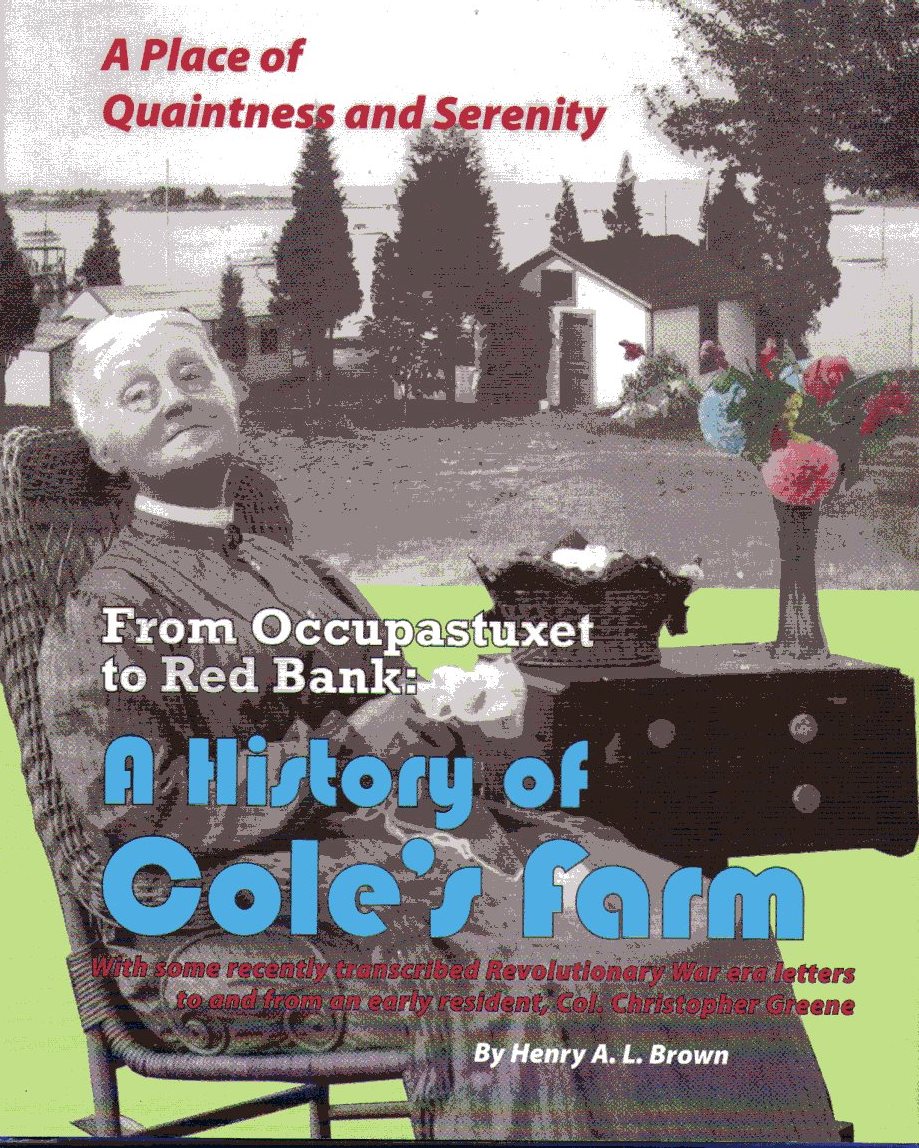The last two years, 2017 and 2016, were good ones for the publication of Rhode Island history books. This week, I review some of them. Last week, Christian McBurney reviewed three such books, and next week will review three (yes three!) historical novels with Rhode Island in the Revolutionary War as the backdrop.
Patricia Kane, Art & Industry in Early America – Rhode Island Furniture, 1650 – 1830. (Yale University Press, 2016) ($85.00, 494 pages) Yale University Art Gallery recently mounted a groundbreaking exhibition under the title Art & Industry in Early America Rhode Island Furniture 1650 – 1830. The exhibit provided a comprehensive survey of more than 130 pieces of Rhode Island furniture from the colony’s earliest days to the Federal period. The exhibition also produced a catalog; however, the word catalog fails to describe the handsome, nearly 500 page, hardbound book published by Yale University Press. As noted in the book’s foreword, “Rhode Island furniture has long been recognized for its craft and innovation. One might well ask what more is to be learned about a subject that has fascinated so many past and present scholars, not to mention dealers, collectors, and the general public. With exciting new discoveries and fresh perspectives, Art & Industry in Early America seeks to better highlight the major contributions the colony and eventual state made to the history of furniture making and to inspire a newfound appreciation for one of the most important schools of furniture making in early America.”
If that is not enough for the Rhode Island history buff to rush out and buy the book then consider Arts & Industry in Early America Rhode Island Furniture, 1650-1830 more than just another museum catalog. Five comprehensive chapters by leading experts explore different aspects of Rhode Island craftsmanship including furniture making, chair making and the upholstery trades as well as clock making. Typically books of this nature tend to focus on the larger producing centers such as Newport and Providence but the chapter “Early Furniture Making of the Narragansett Bay Region 1636 – 1740” by Dennis Carr of the Museum of Fine Arts, Boston discusses furniture from the smaller towns of East Greenwich, North Kingstown, Warren and Westerly as well. The chapter “Clockmaking in Colonial and Early Federal Rhode Island” by Patricia E. Kane and Gary R. Sullivan explores clockwork makers such as William Clagget and his son-in-law James Wady of Newport, Samuel Rockwell and Edward Spalding of Providence, and Squire Millerd of Warwick. All five chapters are enjoyable to read, well written and documented with extensive footnotes. The second half of this publication is the catalog of the exhibition providing nearly 400 high quality color photographs as well as detailed descriptions of the items on display. The book, when all is said and done, is a Rhode Island history book, an art book, and a museum catalog, but most of all it is a fascinating read.
Click here to buy Art & Industry in Early America – Rhode Island Furniture on Amazon.com.
Christy Clark-Pujara, Dark Work. (New York University Press, 2016) ($40.00, 205 pages) Dark Work by Christy Clark-Pujara is an important full-length study that unveils the extent of the state’s involvement in the slave trade. More than any other state Rhode Island plied the triangle trade. Clark-Pujara uses economic history to investigate how Rhode Island played such a significant role in the business of slavery. The book is not long with only 197 pages of text, but it is well-researched with nearly 600 endnotes. For history buffs endnotes are often as important as the text.
Clark-Pujara’s book not only examines the business of slavery but also how enslaved and free blacks in Rhode Island responded to the socioeconomic forces about them. As she noted at the end of her Introduction “The history of Rhode Island must include their stories because they too shaped Rhode Island and the United States.” Her work spans a considerable period of time in so short a book – addressing everything from early 17th century colonial laws pertaining to slavery to the aftermath of the Civil War. She looks at how enslaved and free blacks supported the West Indies trade with the production and exportation of Rhode Island products like lumber, beef, pork, butter, cheese, crops, candles and horses in exchange for sugar and molasses as well as black labor in the rum making and ship building trades in support of the Atlantic slave trade. After examining the slave trade the author goes on to discuss the role of Rhode Island textile mills and the manufacture of negro cloth noting that 79 percent of these textile mills manufactured slave clothing. This seems like a large percentage and for what is an economic history, I would have liked to have seen more discussion on this topic. It seems the author places much emphasis on the manufacture of negro cloth and not enough on the textile business in general considering that all products coming out of these mills was done using cotton grown on the slave based plantations of the South.
C. Roger Wallin, The Ships from Field’s Point Providence RI 1942 – 1945, (Dorrance Publishing Co., 2017 ($33, 165 pages). This book gives a most detailed account of the ships that were built at Field’s Point in Providence during the Second World War. Wallin, an engineer by profession, gives a detailed and technical account of the different classes of ships built under the United States Maritime Commission to meet the nation’s wartime needs. In all, three classes of ships were built in Providence, the famous Liberty ships of which eleven were built locally; escort vessels, similar to Navy Destroyer Escorts, of which twenty-one were built, many for the British Navy; and Combat Loaded Cargo Ships of which thirty-two were built. For each class Wallin discusses their general characteristics, offensive and defensive capabilities, manning requirements and even naming considerations. All the ships from Field’s Point were built under the operational management of the Walsh-Kaiser Corporation. This book is well researched and illustrated; the author even has a chapter on the Field’s Point ships’ postwar service and final disposition. Of the sixty-six ships built in Rhode Island regrettably none survive; the last one was sunk in 1988 to create an artificial reef. The shipyard is long gone. Many of us of a certain age will remember the Shipyard Drive-In off Allen’s Avenue, but today the shipyard land is part of the campus of Johnson and Wales University. While well written and enjoyable to read, the book, however, should not be considered a Rhode Island history book, other than the fact that these ships were built in Rhode Island and many of the Liberty Ship’s built here were named after prominent Rhode Islanders. It does not provide a history of the Providence Shipyard itself (as Patrick T. Conley does in his chapter in World War II Rhode Island (History Press, 2017). It is more a book for the reader of naval and maritime history, and shipbuilding.
Buy The Ships from Field’s Point Providence RI 1942 – 1945 on Amazon.com.
Joseph E. Coduri, Rhode Island Railroad Station: Post Card Views at the Turn of the 20th Century. (CreateSpace, 2015) ($40, 181 pages) This is the first of three books to be published by noted Rhode Island postcard collector Joe Coduri. This book is well illustrated with numerous rare postcard views. Each chapter looks at a different railroad line that once passed through the state and the stations along the way. Surprisingly for such a small state there were certainly many different railroad lines. The book is also illustrated using images, often in color, of old railroad ephemera and maps that enhance the reader’s understanding and enjoyment. The captions to all postcard images are well researched proving the reader with numerous and sometimes obscure historical facts. The final few chapters take an interesting look at flag stations, signal towers, and depot disasters. This book would make a wonderful holiday gift for the postcard enthusiast, railroad collector, or Rhode Island history buff.
Buy Rhode Island Railroad Station: Post Card Views at the Turn of the 20th Century on Amazon.com.
Henry A. L. Brown, From Occupastuxet to Red Bank: A History of Cole’s Farm (Dark Entry Press, 2013) ($25.00, 70 pages) Warwick historian Henry Brown has given us another book worth reading. Not only is it a loving account of this special place in Warwick, but it is also a reminiscence of the author’s early years. As the author notes he had “been gathering an oral history of the Cole Farm” for many years from people who lived and worked on the farm. In addition to this research, he recalls stories told by his late father, Francis H. Brown and his grandfather and coupled with a newspaper clipping that he uncovered he was able to create this book. Cole Farm in the Occupastuxet area of Warwick was part of a large tract of land purchased in 1642 by Surgeon John Greene and is best known as the birthplace of Christopher Greene, “Hero of Red Bank,” who defended Fort Mercer outside Philadelphia, and commanded the Rhode Island’s Black Regiment in the Revolutionary War. In later years this land served as a resort in the summertime, a place to enjoy the cool breezes off Narragansett Bay, and a gathering place for clambakes with a resort hotel at nearby Mark Rock. The book is well illustrated with many images that come right out of family photo albums. In addition, the book has an addendum of some of Colonel Christopher Greene’s correspondence from 1777 to 1781. The last letter, dated April 16th, was written just weeks before he was killed at the Battle of Pine’s Ridge on May 14, 1781. An enjoyable book overall and recommended to the readers of Small State Big History.
Buy From Occupastuxet to Red Bank: A History of Cole’s Farm on Amazon.com.




























